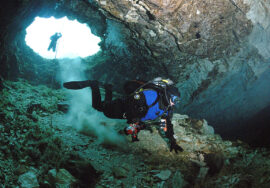Florida, with its miles of pristine coastline, abundant marine life, and subtropical climate, offers a treasure trove of natural wonders. Among these treasures, shelling is a favorite pastime for both locals and tourists alike. The Sunshine State is home to some of the best shelling beaches in the United States, attracting enthusiasts from all over the world. In this article, we will explore the fascinating world of shelling in Florida and discover the hidden gems that can be found along its shores.
Shelling is the art of collecting seashells that have been washed ashore. A peaceful endeavor, finding beauty and a unique story in every shell.
The Shelling Experience
Florida’s diverse coastline provides an ideal environment for shells to wash up onto its sandy shores.
Best Shelling Beaches
- Sanibel Island: Often considered the shelling capital of the world, Sanibel Island boasts an abundance of seashells. Its unique geography, with an east-west orientation, allows shells to accumulate along its shoreline. The Sanibel Stoop, a term coined for the signature hunched posture of shell collectors, is a common sight here.
- Captiva Island: Located just north of Sanibel, Captiva Island offers a similar shelling experience. Its secluded beaches are perfect for those looking for a tranquil shelling adventure.
- Marco Island: On the Gulf Coast of Florida, Marco Island’s Tigertail Beach is another popular spot for shell seekers. The tidal pools and sandbars here often reveal fantastic finds after a low tide.
- Naples: With its upscale resorts and beautiful beaches, Naples is a great place to combine luxury with shelling. The beaches of Naples are famous for their high-quality seashells, particularly the rare and coveted junonia shell.
- Anastasia State Park: Located near St. Augustine on Florida’s east coast, this state park offers a unique shelling experience. The coquina rock formations create pockets where shells accumulate, providing ample opportunities for collectors.
Types of Shells
Florida’s waters are home to a wide variety of seashells, each with its own unique beauty. Some of the most common shells you can find while shelling in Florida include:
- Conch Shells: The large and iconic conch shells are often found on Florida’s beaches. They come in various colors and are prized for their smooth, spiral patterns.
- Lightning Whelks: These distinctive shells have elongated, twisted spires and are often encountered by shelling enthusiasts.
- Sand Dollars: Sand dollars are flat, round shells that are particularly appealing due to their delicate, star-like designs.
- Alphabet Cones: These small, cone-shaped shells display intricate patterns and are highly sought after by collectors.
- Olive Shells: Named for their olive-like shape, these shells are found in various sizes and colors, making them a favorite among collectors.
Ethical Shelling
While shelling can be an exciting hobby, it’s essential to practice ethical collecting. Here are some guidelines to ensure the sustainability of this activity:
- Only collect empty shells. Living organisms may still inhabit shells, so be sure to inspect them carefully before taking them home.
- Respect local regulations and protected areas. Some beaches may have restrictions on shelling to protect fragile ecosystems.
- Avoid overcollecting. Taking only what you need ensures that future generations can also enjoy the beauty of Florida’s seashells.
Conclusion
Shelling in Florida is not just a hobby; it’s a way to connect with the natural beauty of the Sunshine State. Whether you’re a seasoned collector or a first-time beachcomber, Florida’s beaches offer a unique opportunity to discover and appreciate the wonders of the ocean. Remember to practice ethical shelling, and you’ll contribute to the preservation of this captivating pastime for generations to come. So, grab your bucket and your sunscreen, and embark on a shelling adventure along Florida’s magnificent shores.








